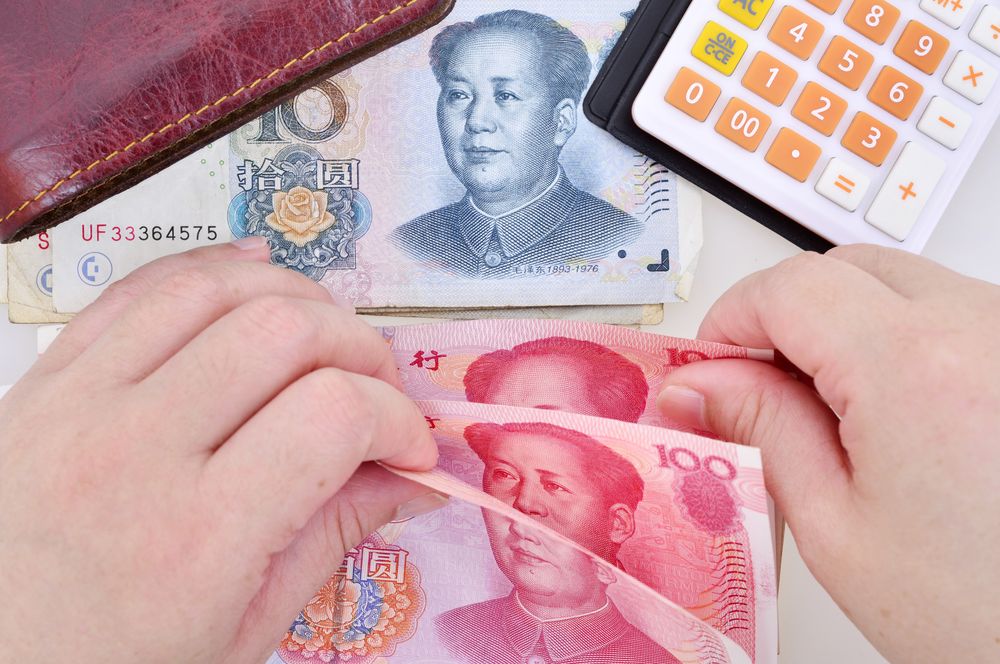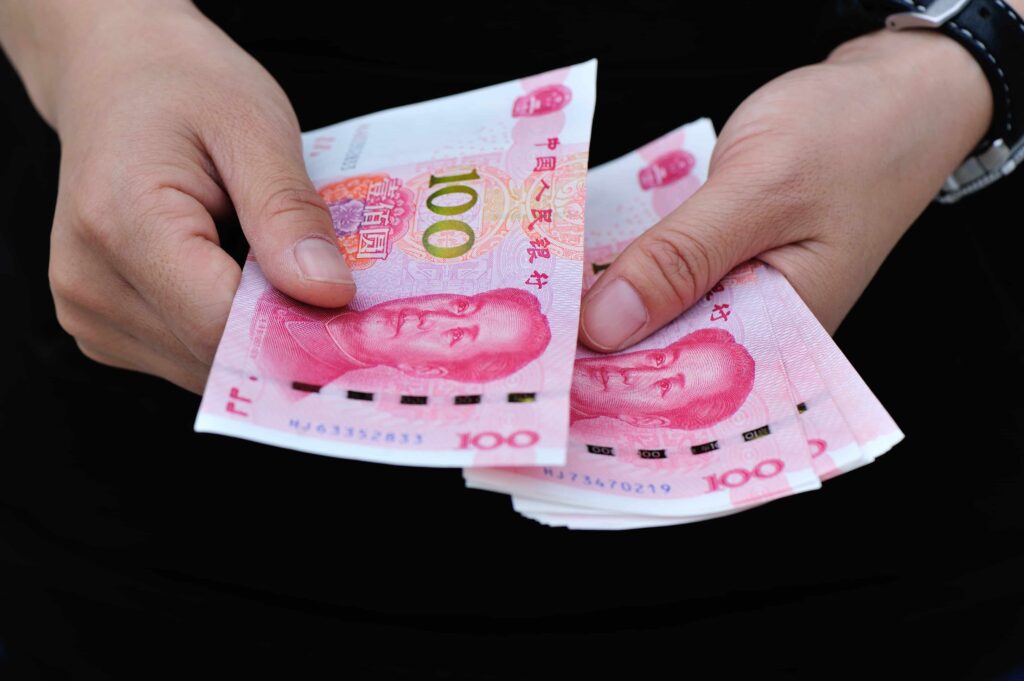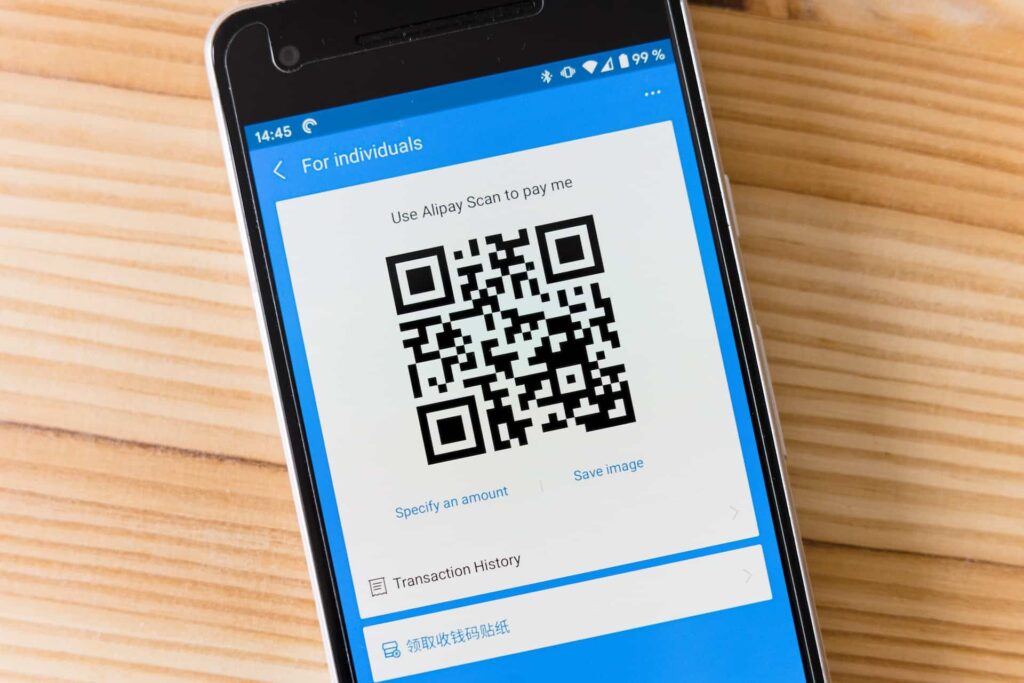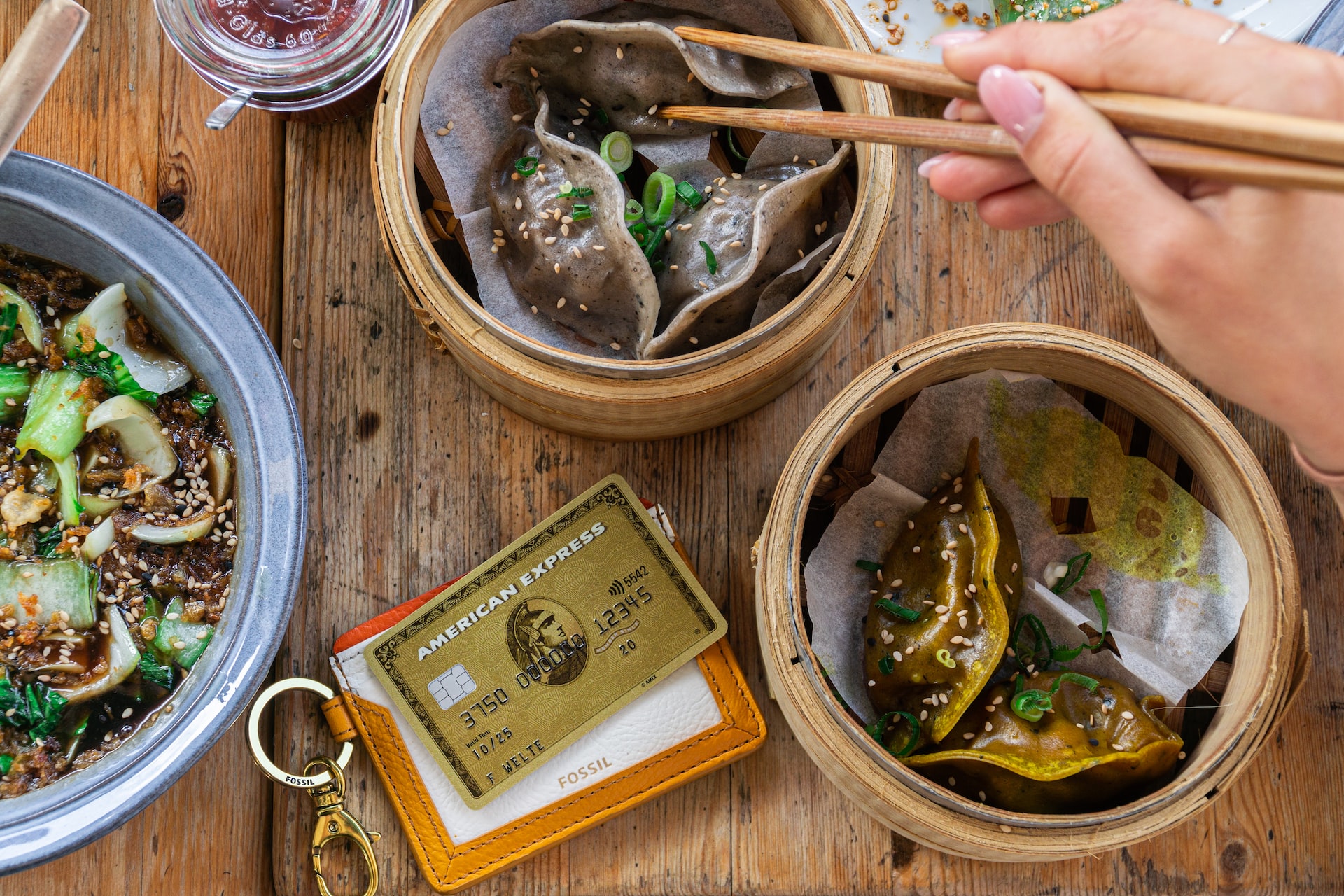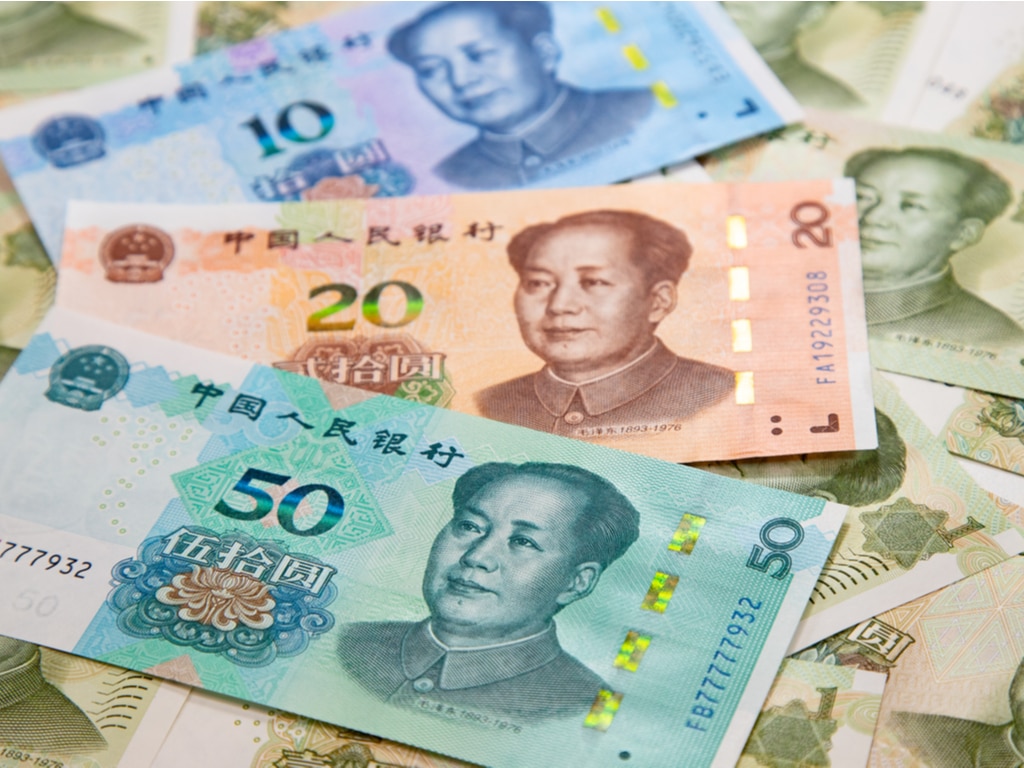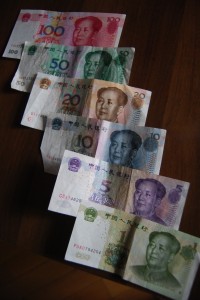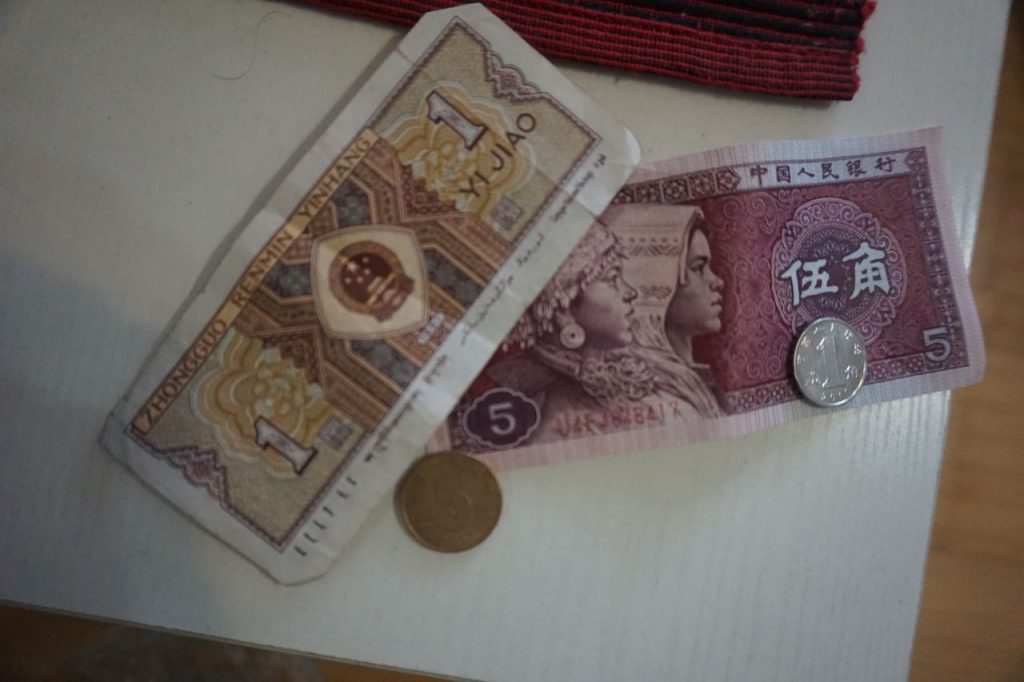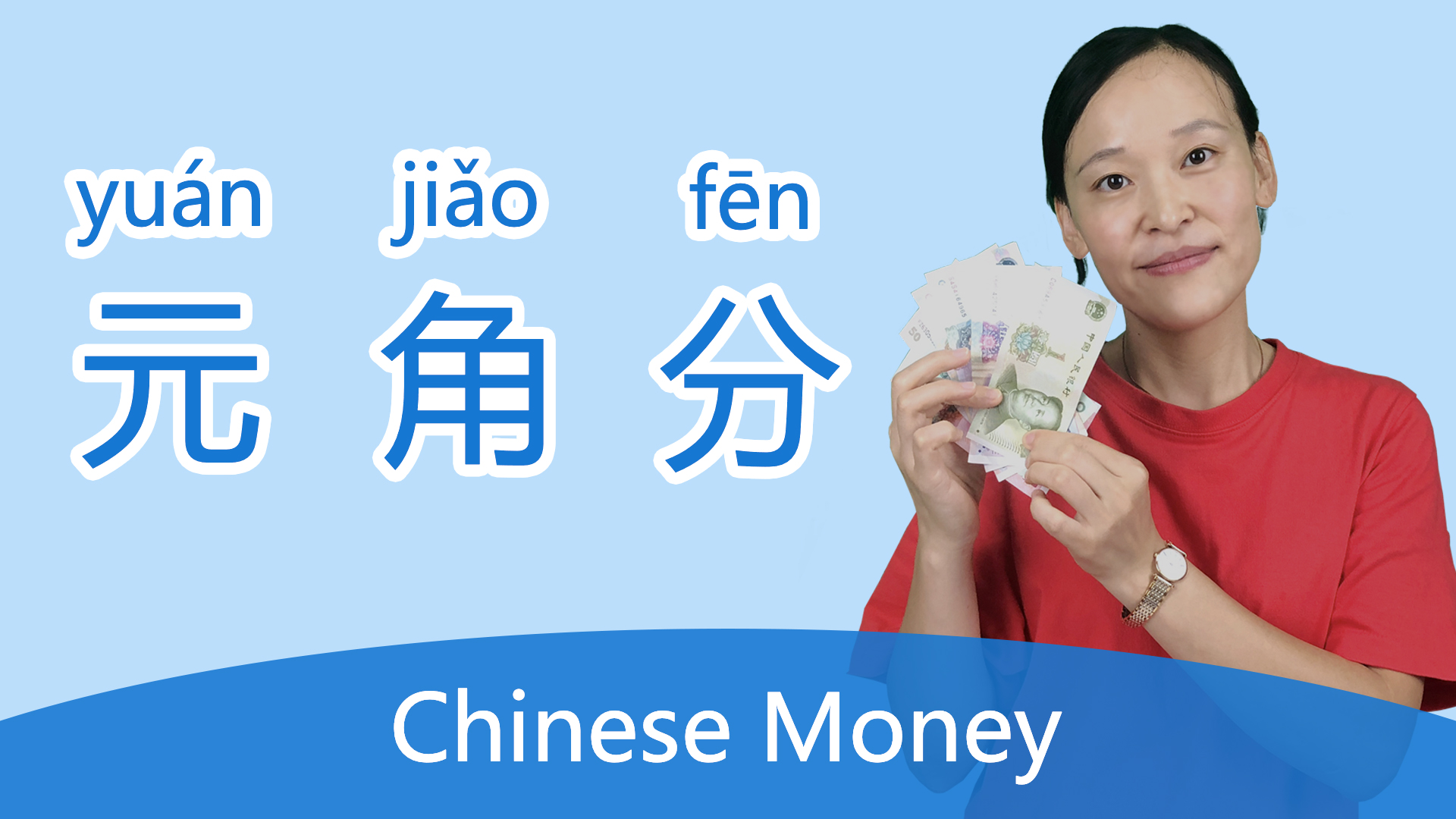By
Last updated:
August 27, 2022
Money makes the world go round, doesn’t it?
Okay, money isn’t everything, but it does play a huge part in our lives.
钱 (qián) is money in Chinese, but do you know other vocabulary and phrases to talk about financial exchanges?
Because money is so essential to us and the fact that China is one of the top 10 wealthiest nations in the world, it makes sense to learn this particular vocabulary theme in Chinese.
Let’s get started!
Contents
- Vocabulary and Phrases for Paying in Cash
- Vocabulary and Phrases for Cards and Cashless Payments
- Phrases for Money Transactions
-
- Shopping
- Paying for Meals
- Visiting the Bank
- Different Currencies in Chinese
- Chinese Currency: CNY vs. RMB
-
- What’s Yuan?
- What’s Renminbi?
Download:
This blog post is available as a convenient and portable PDF that you
can take anywhere.
Click here to get a copy. (Download)
Vocabulary and Phrases for Paying in Cash
钱 (qián) — money
现金 (xiànjīn) — cash, ready money
钞票 (chāopiào) — banknote, paper money, (money) bill
硬币 (yìngbì) — coin
零钱 (língqián) — small change, loose change
元 (yuán) — monetary unit
块 (kuài) — informal form of 元, more common in conversation
角 (jiǎo) — 0.1 yuan, 10 cents/pennies, dime
毛 (máo) — informal form of 角, more common in conversation
分 (fēn) — 0.01 yuan, 1 cent/penny
钱包 (qiánbāo) — wallet
零钱包 (líng qiánbāo) — coin purse
货币 (huòbì) — currency
When discussing price, you might’ve noticed native speakers switching between 元 and 块.
This is similar in the United States, where you might switch between “dollars” and “bucks,” or in the UK where they’d use “pounds” and “quid” interchangeably.
While 块 is considered the informal version of 元, it’s more commonly used than 元 in everyday situations.
So if you want to say ¥50, you can either say:
五十元 (wǔshí yuán)
五十块 (wǔshí kuài)
One thing to note is that 元 is normally used for prices in whole numbers. If a price has decimal points, 块 would be the unit to use.
For example, if you want to say ¥9.30, you’d say:
九块三毛 (jiǔ kuài sān máo)
For brevity, say 九块三.
In China these days, it’s rare for anything to be priced to the exact penny, but if you do come across a product that costs ¥6.24, the price in Chinese would be 六块两毛四分 (liù kuài liǎng máo sì fēn).
It’s a mouthful, so don’t hesitate to shorten it to 六块两毛四.
Vocabulary and Phrases for Cards and Cashless Payments
No cash in your wallet? No problem.
China’s steadily moving towards being a cashless society, with even small street vendors accepting mobile payments.
Both locals and foreigners alike have been using apps such as Alipay and WeChat Pay to shop, pay bills, book tickets and more. Yes, WeChat is much more than just a messaging app.
Here are the options of payment when going cashless:
借记卡 (jiè jì kǎ) — debit card
信用卡 (xìnyòngkǎ) — credit card
Visa卡 (visa kǎ) — Visa card
万事达卡 (wànshìdá kǎ) — MasterCard
支付宝 (zhīfùbǎo) — Alipay
微信支付 (wēixìnzhīfù) — WeChat Pay
To pay by card, simply say:
我要刷卡 (wǒ yào shuākǎ), which literally means you want to swipe your card.
To ask if the above cashless payments are available, you’d just tack on 可以吗 (kěyǐ ma) after saying your preferred payment.
For example, if you want to ask, “Do you accept WeChat Pay?” or “Can I pay by WeChat?” you’d say:
微信可以吗? (wēixìn kěyǐ ma?)
Phrases for Money Transactions
Shopping
You might already know some key phrases when it comes to shopping, so let’s focus primarily on money exchanges.
To ask, “How much is this?” in Mandarin, you’d ask:
这个多少钱? (zhège duōshǎo qián?)
Is it too expensive? Say:
太贵了! (tài guì le!)
If you happen to be shopping at a market or a store that does allow bartering, you could ask for a discount.
An indirect way of asking is by saying:
能便宜一点吗? (néng piányi yīdiǎn ma?), meaning “Can you reduce the price?”
Although if you don’t mind being more direct, you could ask:
可以打折吗? (kěyǐ dǎzhé ma?), meaning “Can I get a discount?” or “Is there a discount?”
Unless specified otherwise, most stores and vendors accept cash payments.
Refer to the formula provided above if you’re going cashless.
Paying for Meals
You’ve successfully ordered your food in Chinese, and now it’s time to pay the bill.
If you haven’t been given the bill yet, you can ask for it by saying:
服务员,买单 (fú wù yuán, mǎi dān), which literally translates to, “Server, bill.”
Need to split the bill? Let your server know that you want to pay separately by saying:
分开付 (fēn kāi fù) — pay separately
If you need an invoice for tax purposes, just ask 可以给我发票吗? (kěyǐ gěi wǒ fāpiào ma?), which means, “Can you give me an invoice/official receipt?”
You’d then indicate the type of 发票 you need.
In China, you’d request either “individual,” which is 个人 (gèrén), or “company,” which is 单位 (dānwèi).
For the latter, you’ll have to provide your company name and address in Chinese.
Visiting the Bank
Looking for an ATM machine, or perhaps need a bank statement?
Regardless of whether you can carry a conversation in Chinese without fumbling, knowing these terms will at least give the bank tellers an idea of the kind of service you require.
自动取款机 (zìdòng qǔkuǎn jī) — ATM
银行 (yínháng) — bank
新账户 (xīn zhànghù) — new bank account
帐号 (zhànghào) — account number
储蓄账户 (chúxù zhànghù) — savings account
支票账户 (zhīpiào zhànghù) — checking account
银行证明 (yínháng zhèngmíng) — bank certificate
银行对账单 (yínháng duì zhàng dān) — bank statement
取钱 (qǔ qián) — to withdraw (from a bank account)
存入 (cún rù) — to deposit (from a bank account)
存款单 (cúnkuǎn dān) — deposit slip
国外汇兑 (guówài huìduì) — foreign exchange
Different Currencies in Chinese
Curious about what global currencies are in Chinese? Here are the Mandarin translations for the most commonly traded currencies for your reference.
美元 (měiyuán) — USD, American dollar
欧元 (ōuyuán) — EUR, euro
日元 (rì yuán) — JPY, Japanese yen
英镑 (yīngbàng) — GBP, Great British pound, pound sterling
澳元 (àoyuán) — AUD, Australian dollar
加元 (jiā yuán) — CAD, Canadian dollar
瑞士法郎 (ruìshì fǎláng) — CHF, Swiss franc
港元 (gǎngyuán) — HKD, Hong Kong dollar
纽元 (niǔ yuán) — NZD, New Zealand dollar
瑞典克朗 (ruìdiǎn kèlǎng) — SEK, Swedish krona
Chinese Currency: CNY vs. RMB
You might’ve heard people referring to Chinese money as yuan and remininbi. So what exactly is the difference between the two?
What’s Yuan?
Without getting too technical with financial lingo, 元 (yuán) is the unit of account; simply meaning a unit that indicates how price is measured, such as the value of banknotes and coins.
Thus, when you’re talking about denominations, you’d say 100 yuan, 50 yuan, 20 yuan, 10 yuan and so forth.
Yuan (¥) is also the symbol and unit used in foreign exchange, and CNY is the abbreviation used in international finance, trading and other modes of monetary exchange.
What’s Renminbi?
Renminbi (RMB) or 人民币 (rénmínbì), on the other hand, is the official currency of China. Known as the “people’s currency,” it’s referred to as the country’s medium of exchange.
The difference between the two is subtle, but most of the time, people will talk about Chinese money in terms of renminbi, as indicated in this conversation below.
Even though the two people in the conversation are discussing foreign exchange rates, the first speaker is speaking about Chinese currency as a medium of exchange, not as a unit of account. Therefore, he refers to Chinese currency as renminbi.
And there you have it. Knowing all these terms and phrases may not be as pain-relieving as counting money, but it sure does make life a lot easier when dealing with money in Chinese!
Download:
This blog post is available as a convenient and portable PDF that you
can take anywhere.
Click here to get a copy. (Download)
There’s been a lot of talk about China’s currency – the RMB (renminbi) – in the past few days, as the People’s Bank of China allowed it to depreciate by 2% against the dollar. Do a brief search, and you’ll find tons of articles from financial publications all around the world speculating on the reasons for this move and the resulting effects it will have on not only China’s, but the entire global economy. This video from Bloomberg Business is a good crash course on the situation for those who haven’t been following:
As an English teacher, Chinese student, and freelance blogger, I’m not exactly qualified to be giving precise financial analysis. What I can do for you, however, is teach you how to talk about money in Chinese. Whether we like it or not, money plays a rather important role in our daily lives, especially when you move to another country and need to learn a bunch of new words just to complete your day-to-day business. In this post, I’ll give you the basics about China’s currency as well as a bunch of words/phrases you’ll need to handle daily financial matters in Chinese.
China’s Currency
All of the RMB notes in order.
As mentioned above, China’s currency is officially called the renminbi (人民币 – rén mín bì). This word can loosely be translated as the “people’s currency” – not a surprise in the People’s Republic of China. While RMB is the symbol you’ll see on exchange boards and in banks, people don’t generally use that word in daily life; rather, they say “yuan” (元 – yuán). It’s kind of like the difference between saying “USD” or just “dollars.” Another word that’s often used informally is kuai (块 – kuài), like how one might say “bucks” in the US or “quid” in the UK. The Chinese RMB is printed in 100, 50, 20, 10, 5, and 1 notes, all featuring Mao Zedong on the front and various landmarks from around the country on the back. For a more detailed explanation of the different notes and their images, check out this past post.
Small change in China.
There are also notes and coins for jiao (角 – jiǎo). Ten jiao make up one yuan, so they’re the Chinese equivalent of a dime. Colloquially, it’s called mao (毛 – máo), which is in fact the same character as the Chairman’s surname, but this word was actually used well before his time. Jiao (or mao) come in 1 and 5 notes, as well as 1 and 5 coins. Finally, one jiao is divided into ten fen (分 – fēn), China’s penny. These only come in 1 coins, making them basically worthless – you would need 200 of them just to buy a bottle of drinking water.
Talking About Money
The general Chinese word for money is qian (钱 – qián). Here’s a common example where you’ll hear and use this word:
-
How much is it? (多少钱? – duō shǎo qián)
-
15 kuai. (十五块钱 – shí wǔ kuài qián)
It’s common to add the word qian after kuai when discussing prices. Sometimes people simply say kuai, but they’ll never just say qian. Following so far?
Prices aren’t always even, though. Take, for example, an item that costs $5.99 in America. People would never say “five dollars and ninety-nine cents.” Similarly, people in China like to simplify things when talking about prices. Here are a few examples of prices and how people would say them:
-
10.5 (十块五毛 – shí kuài wǔ máo)
-
70.3 (七十块三毛 – qī shí kuài sān máo)
For lower numbers, it’s even common to drop the mao part entirely. The example above would often be stated simply as 十块五 (shí kuài wǔ), especially in places like your local vegetable market. Whenever you’re dealing with jiao or fen, people often use the phrase “small change” (零钱 – líng qián).
Speaking of prices, sometimes you can bargain for items in China. To do this, you’ll want to know the words for cheap (便宜 – pián yí) and expensive (贵 – guì). Here are a few useful phrases you’ll want to remember for bargaining:
-
Can you make it a little cheaper? (可以便宜一点吗? – kě yǐ pián yí yī diǎn ma)
-
It’s a little expensive. (有点贵 – yǒu diǎn guì)
-
It’s too expensive. (太贵了 – tài guì le)
Vocabulary
For easy reference, here are all of the vocabulary words taught in this post:
- renminbi (人民币 – rén mín bì) = official term for China’s currency
- yuan (元 – yuán) = one unit of Chinese currency
- kuai (块 – kuài) = colloquial term for yuan
- jiao (角 – jiǎo) = 1/10 of one yuan
- mao (毛 – máo) = colloquial term for jiao
- fen (分 – fēn) = 1/100 of one yuan
- qian (钱 – qián) = money
- small change (零钱 – líng qián) = small change
- cheap (便宜 – pián yí) = cheap
- expensive (贵 – guì) = expensive
How to Express the Amount of Chinese Currency?
Chinese currency is Renminbi. The units of Renminbi include 元(yuán), 角(jiǎo), and 分(fēn), in spoken Chinese, they are called 块(kuài), 毛(máo), and 分(fēn). “分(fēn)” is such a small unit so you seldom see it in daily life. It is usually used to show the price of a small good or used in money calculation. Through this lesson, you’ll know how to express the amount of Chinese currency, how to ask for price and bargain in Chinese.
Renminbi/Symbol
Chinese currency is Renminbi. The units of Renminbi include 元(yuán), 角(jiǎo), and 分(fēn), in spoken Chinese, they are called 块(kuài), 毛(máo), and 分(fēn). “分(fēn)” is such a small unit so you seldom see it in daily life. It is usually used to show the price of a small good or used in money calculation. Through this lesson, you’ll know how to express the amount of Chinese currency, how to ask for price and bargain in Chinese.
The symbol of Renminbi is ¥.
1元 [yì yuán] = 10角 [shí jiǎo]
1角 [yì jiǎo] = 10分 [shí fēn]
Chinese bills include: 1角/毛, 5角/毛, 1元/块, 5元/块, 10元/块, 20元/块, 50元/块, 100元/块. And the coins include: 1角/毛, 5角/毛, 1元/块.
Read the 10 Amounts
1. ¥1
2. ¥2
3. ¥0.5
4. ¥6.7
六块七 [liù kuài qī]
( “毛” is omitted)
5. ¥32.56
6. ¥100
7. ¥200
二百块 [èr bǎi kuài]
(two sayings)
8. ¥410.99
9. ¥1000
10. ¥3865.88
Note:
In written Chinese, when appearing with “元(yuan)” in one sentence, “角(jiao)” and “分(fen)” can’t be omitted.
In spoken Chinese, if there is “块(kuai)” in one sentence, “毛(mao)” or “分(fen)” is often to be omitted.
You can refer to the fourth, fifth, eighth, and the tenth example.
人民币 [rén mín bì]
n. people’s currency
纸币 [zhǐ bì]
n. paper money
元 [yuán]
m. yuan/kuai, similar to dollar
块 [kuài]
m. yuan/kuai, similar to dollar
角 [jiǎo]
m. jiao/mao, similar to dime
毛 [máo]
m. jiao/mao, similar to dime
分 [fēn]
m. fen, similar to cent
零用钱 [líng yòng qián]
n. pocket money
多少钱 [duō shǎo qián]
how much money
找钱 [zhǎo qián]
v. give change
Dialogues
1
How much pocket money does your mother give you every month?
2
Your new cup is very beautiful! How much does it cost?
3
4
It’s too high, can you make it cheaper?
260 Yuan, the lowest price.
5
Give you the change, 2 Mao.
6
How much is the pair of shoes?
We give you 20% discount, it’s 480 Yuan.
If you plan to travel to China or Taiwan or would like to know what currencies they are using and what their paper bills and coins look like, you have come to the right place. In this article, we are going to talk about money vocabulary in Mandarin Chinese, what Renminbi and the New Taiwan Dollar look like, what crucial sentences you may use when buying stuff in China, and what other currencies are used around the world and their names in Chinese.
Money Related Vocabulary in Chinese

钱 / 錢 qián Money
We translate money in Chinese as “钱 / 錢 qián.” Do you know how to say “rich, wealthy” in Chinese?
A very simple phrase, “有钱 yǒu qián.” “有 yǒu” means “to have.” So, it makes sense that “have money” means “rich.” Here is how to use it:
- 他很有钱。 Tā hěn yǒu qián.
He is rich! (He has got money!)
- 我没有钱。 Wǒ méiyǒu qián.
I do not have money.

多少 / 多少 duōshǎo How much, how many
To ask how much something costs in Chinese, this is how to ask:
多少钱? Duōshǎo qián?
How much (money)?
(多少 duōshǎo can be either how much or how many. For instance, 你想吃 多少个 水饺?Nǐ xiǎng chī duōshǎo gè shuǐjiǎo? How many dumplings would you like to have?)

人民币 / 人民幣 rénmínbì RMB
人民币 rénmínbì RMB is the currency that is used in mainland China. The exchange rate to the USD is approximately 1 USD equals around 7 RMB as this is written (2020). The currency sign for RMB is ¥.

新台币 / 新台幣 xīn táibì New Taiwan Dollar (NTD)
新台幣 xīn táibì the New Taiwan Dollar is the currency used in Taiwan, as well as a few islands around Taiwan, which are Kinmen, the Matsu Islands, and the Penghu Islands. The exchange rate to the USD is approximately 1 USD equals around 30 NTD as this is written (2020). The currency sign for NTD is NT$.
元 / 元 yuán Dollar (Formal name)
块 / 塊 kuài Dollar (Colloquial name)
Both “元 yuán” and “块 kuài” mean “dollar” in Chinese. “块 kuài” is often used with “钱 qián.” Let’s see two examples below:
这件衣服五十块(钱)。
Zhè jiàn yīfú wǔshí kuài (qián).
This piece of clothing is ¥50.
(“块 kuài” and 块钱 “kuài qián” are the same. “钱 qián” is often omitted in this case.)
这两杯奶茶一共三十元。
Zhè liǎng bēi nǎichá yīgòng sānshí yuán.
These two cups of milk tea are ¥30 altogether.
Note: We can use both “元 yuán” and “块 kuài” for RMB and NTD.
毛 / 毛 máo 0.1 yuán (Colloquial name)
角 / 角 jiǎo 0.1 yuán (Formal name)
Both “毛 máo‘ and “角 jiǎo” means 0.1 yuán. “毛 máo” is more common in conversation. 10 毛 máo will make one yuan. We often omit it if this is the last digit of the amount. Let’s see an example below:
这杯咖啡九块五。
Zhè bēi kāfēi jiǔ kuài wǔ.
This cup of coffee is ¥9.5.
(You can say “九块五 毛 jiǔ kuài wǔ jiǔ kuài wǔ.” But it is common to omit it since it is the last digit of the amount. But if the item costs ¥9.99, then we say 九块九毛九 Jiǔ kuài jiǔ máo jiǔ. We say 毛 máo in this case because it is not the last digit. Another note to keep in mind is we will NOT say 九 元 五 jiǔ yuán wǔ. Only 九块五 jiǔ kuài wǔ. We only use 元 yuán for a whole number amount.)
毛 máo is still used in mainland China. But you cannot see it in Taiwan anymore. The reason is that the RMB has a higher value. If 1 USD is 7 RMB, it means 1 RMB is about 14 to 15 cents. The value of 1 máo will be about 1.5 cents. It makes sense that RMB 毛 máo is still circulating. The New Taiwan Dollar, on the other hand, has less value. 1 NTD is worth only about 0.03 USD, which means 1 máo of NTD is only worth 0.0003 USD. There is no need to use it.
分 / 分 fēn 0.01 yuán (Formal name)
It is getting rare to see “分 fēn” in China. And of course, you can’t find it in Taiwan.

钞票 / 鈔票 chāopiào Paper money
Paper money in Chinese is 钞票 chāopiào. The measurement word for it is “张 zhāng,” which is for flat objects.

硬币 / 硬幣 yìngbì Coins
硬 yìn means something is hard, firm.
币 bì means money, coin.
Hard and firm money will be coins.
给 / 給 gěi To give
When giving money to someone, this is the verb you will use
找 / 找 zhǎo To give (change)
The phrase for giving change is 找(钱) zhǎo (qián). But take a look the examples below to see how to use it properly:
(You would like to pay your friend who got something for you. The amount is ¥16.)
Scenario 1:
A: 你会给我十六块,还是要找钱?
Nǐ huì gěi wǒ shíliù kuài, háishì yào zhǎoqián?
Will you give me ¥16 exactly or do I need to give you change?
(Means you may have a ¥20 or larger bill.)
You: 不用找钱,我给你十六块。谢谢!
Bùyòng zhǎoqián, wǒ gěi nǐ shíliù kuài. Xièxiè!
There is no need to give change, I will give you ¥16 exactly. Thank you.
Scenario 2:
A: 你会给我十六块,还是要找钱?
Nǐ huì gěi wǒ shíliù kuài, háishì yào zhǎoqián?
Will you give me ¥16 exactly or do I need to give you change?
You: 对不起啊,我没有零钱,我给你二十块。
Duìbùqǐ a, wǒ méiyǒu língqián, wǒ gěi nǐ èrshí kuài.
Sorry, I don’t have change. I will give you ¥20.
A: 没关系,我 找 你 四块钱。
Méiguānxì, wǒ zhǎo nǐ sì kuài qián.
It’s ok. I will give you four dollars change.
(As you can see “找 你 四块钱 zhǎo nǐ sì kuài qián,” the pattern is “找 + person + amount.”)
错 / 錯 cuò Wrong, incorrect
If someone gives you the wrong change, you can say:
你找错了。你多找了我一块钱。
Nǐ zhǎo cuòle. Nǐ duō zhǎole wǒ yīkuài qián.
You gave the wrong change. You gave me one extra dollar.

杀价 / 殺價 shājià To bargain
“杀价 shājià” literally means “to kill the price!” Is this interesting? You think the price is too high, and you “kill” the original price for a lower one.
贵 / 貴 guì Expensive
When purchasing something, if you think it is too expensive and you would like to negotiate the price, you can say:
太贵了!便宜一点吧!
Tài guì le! Piányí yīdiǎn ba!
It is too expensive! Can you lower the price?
便宜 / 便宜 piányí Inexpensive, cheap
这些口罩很便宜,可以多买一些。
Zhèxiē kǒuzhào hěn piányí, kěyǐ duō mǎi yīxiē.
Those face masks are pretty cheap. You can buy some more.
Numbers in Chinese with Money Units
When talking about money, there is no doubt that numbers will come along. The rules are pretty simple. Let’s see two examples below:
How to say ¥ 243.98
人民币 两百四十三块 九毛八
Rénmínbì liǎng bǎi sìshísān kuài jiǔ máo bā
(Of course, you do not need to say Renminbi if it is obvious. We will only be that specific if there is more than one currency that may apply in that situation. If you need to say it, place it before the amount.)
How to say ND$1520
新台幣 一千五百二十 元 Xīn táibì yīqiān wǔbǎi èrshí yuán
If you would like to learn more about Chinese numbers, don’t miss this post!
Renminbi Paper Bills and Coins
Let’s take a look at what the Renminbi looks like in paper bills and coins.
This is ¥100 front and back. (paper)

This is ¥50 front and back. (paper)

This is ¥20 front and back. (paper)

This is ¥10 front and back. (paper)

This is ¥5 front and back. (paper)

This is ¥1 front and back. (paper)

This is ¥1 front and back. (coin)

This is ¥0.5 front and back. (coin)

This is ¥0.1 front and back. (coin)

Renminbi Paper Bills and Coins Infographic

New Taiwan Dollar Paper Bills and Coins
Let’s take a look at what the New Taiwan Dollar looks like in paper bills and coins.
This is ND$ 1000 front and back. (paper)

This is ND$ 500 front and back. (paper)

This is ND$ 100 front and back. (paper)

This is ND$ 50 front and back. (coin)

This is ND$ 10 front and back. (coin)

This is ND$ 5 front and back. (coin)

This is ND$ 1 front and back. (coin)

New Taiwan Dollar Paper Bills and Coins Infographic

Buying Things in Chinese
Bargaining is not common in the United States. In China and Taiwan, people still bargain when they purchase, not that much in a store or mall, but at a street stand or in a market place.
Ordering bubble tea conversation…
我要一杯大杯的珍珠绿茶。
Wǒ yào yībēi dà bēi de zhēnzhū lǜchá.
I want a large cup of green tea with boba.
热的冰的?
Rè de bīng de?
Hot or cold?
冰的。
Bīng de.
Cold.
冰块呢?
Bīng kuài ne?
Ice level?
去冰。
Qù bīng.
No ice.
甜度呢?
Tián dù ne?
Sugar level?
少糖
Shǎo táng
Less sugar.
好,这样是七块五。
Hǎo, zhèyàng shì qī kuài wǔ.
It is ¥7.5.
(When ordering drinks in China and Taiwan, it is very common for you to want to adjust the sugar and ice levels. It may sound interesting for some people that there is even a hot or cold option. This is a cultural thing. When drinking tea in China, originally we only used to drink hot tea with no sugar. When bubble tea became popular, more younger people preferred cold drinks with some sugar, but they still kept the original flavors. For sugar and ice levels, different drink shops have their own standards. Usually they have 3 to 5 different levels for each. For example, the sugar level can be no sugar, half sugar, and full sugar. In some stores, they may have 3 out of 10 and 8 out of 10 in between to be more specific. The same applies to the ice level.)


Buying some accessories from a street vendor…
这一个多少钱?
Zhè yīgè duōshǎo qián?
How much is this?
一个七块,两个十块。
Yīgè qī kuài, liǎng gè shí kuài.
One for ¥7, two for ¥10.
太贵了!算便宜一点吧!三个十块,行吗?
Tài guìle! Suàn piányí yīdiǎn ba! Sān gè shí kuài, xíng ma?
That’s too expensive! Give me a discount! How about three for ¥10?
好吧!行,算你三个十元。
Hǎo ba! Xíng, suàn nǐ sān gè shí yuán.
OK, fine. Three for ¥10 for you…
(Well, bargaining is usually not that easy in a real situation. It will usually go back and forth a few times until both sides reach an agreement. It also depends on where you shop. It is rare to bargain in malls, bigger stores, and grocery stores. But it is still very common to do so in small shops and at street stands.)
World Map with 18 Currencies in Chinese
Here is a list of 18 currencies in Chinese and where they are used around the world.
- 加元 jiā yuán CAD ($)
-
美元 Měiyuán USD ($)
-
墨西哥比索 mòxīgē bǐsuǒ MXN ($)
-
巴西雷亚尔 bāxī léi yà ěr BRL (R$)
-
英镑 yīngbàng GBP (£)
-
瑞士法郎 ruìshì fàláng CHF (Fr)
-
欧元 ōuyuán EUR (€)
-
西非法郎 xīfēi fà láng XOF (CFA)
-
中非法郎 zhōng fēi fàláng XAF (FCFA)
-
南非兰特 nánfēi lántè ZAR (R)
-
人民币 rénmínbì RMB (¥)
-
韩元 hányuán KRW (₩)
-
日元 rì yuán JPY (¥)
-
新台币 xīn táibì NTD (NT$)
-
印度卢比 yìndù lúbǐ INR (₹)
-
港元 gǎngyuán HKD ($)
-
澳元 àoyuán AUD ($)
-
新西兰元 xīnxīlán yuán NZD ($)
World Map with 18 Currencies in Chinese Simplified Chinese Version

World Map with 18 Currencies in Chinese Traditional Chinese Version

Is the currency you are using in the list above? If not, share with us what the currency is in Chinese!
Learn Chinese
• By Campbell Alizzi •
November 5, 2019
44 Must Know Money Words in Mandarin 💰 Money in Chinese
Show me the money in Chinese!
Are you looking for terminology for dealing with cash in Chinese?
Then you’ve landed on the right page. We’ll be covering the major currencies in Chinese, banks in Chinese even the old school bank cheque in Chinese.
Money in Chinese
Currency Exchange in Chinese
Banking in Chinese
Renting in Chinese
Wallet in Chinese
Taxes and fines in Chinese
💰💰💰 Take the Money Quiz 💰💰💰
Play
China is quickly becoming a cashless society and soon might not even need the word for money or cash in Chinese.
However, before that happens there is still very important vocabulary needed to perform day to day tasks in China. You’ll probably see a lot of this vocab all over Chinese social media platforms like Weibo too!
Not heard about China’s cashless society? Check out Alice and Katie getting a cup of coffee with zero money in Chinese.
Play
People say “money talks” 有钱能使鬼推磨 yǒu qián néng shǐ guǐ tuī mó
Money in Chinese
Right before getting stuck into all the vocab here’s a key phrase you’ll need everyday and you’ll hear everyday without fail…
多少钱 – Duōshǎo qián
This means how much does it cost. Hugely useful in near all public situation.
Fortunately, money in Chinese can be simple enough if you put in the time to master the terms such as money, credit card and price.
Here’s our breakdown of the most important words for money in Chinese:
- money: 钱 / 货币 qián / huò bì
- coin: 硬币 yìngbì
- debt: 债务 zhài wù
- bank: 银行 yín háng
- credit card: 信用卡 xìn yòng kǎ
- price: 价钱 jià qian
- to pay: 付 fù
- give change: 零钱 líng qián
- ATM: 自动取款机 zì dòng qǔ kuǎn jī
There is LTL’s top 9 most important money in Chinese terms to get you started!
From here you should be able to ask the price in Chinese, where to pay in Chinese and most importantly get your change.
Why not have some fun while learning money terms by playing Chinese monopoly!
Currency Exchange in Chinese
Moving or travelling abroad the first thing you’re going to want to know is where to find the currency exchange, followed closely by how good the exchange rate is that day.
Here’s how to communicate that and find out the exchange in Chinese:
- currency exchange 兑换 duì huàn
- exchange rate 汇率 huì lǜ
| Currency in English | Currency in Chinese |
|---|---|
| $ US Dollar | 美元 měi yuán |
| € European Euro | 欧元 ōu yuán |
| L. Turkish Lira | 里拉 lǐ lā |
| £ English Pound Sterling | 英镑 yīng bàng |
| ¥ Chinese Yuan | 元 yuán |
| ¥ Japanese Yen | 日元 rì yuán |
| ₹ Indian Rupee | 卢比 lú bǐ |
| R$ Brazilian Real | 巴西雷亚尔 bāxī léi yà ěr |
| $ Canadian dollar | 加拿大元 jiā ná dà yuán |
| ₽ Russian Ruble | 俄罗斯卢布 é luó sī lú bù |
| ₩ South Korean Won | 韩元 hán yuán |
| $ Australian dollar | 澳元 àoyuán |
| $ Mexican peso | 墨西哥比索 mòxīgē bǐsuǒ |
| Rp Indonesian rupiah | 印尼盾 yìnní dùn |
| SR Saudi riyal | 沙特里亚尔 shātè lǐ yǎ ěr |
| CHF Swiss franc | 瑞士法郎 ruì shì fǎ láng |
How is the exchange rate today?
Banking in Chinese
We’ve talked about the most common money in Chinese terms to help you get by in China.
Now let’s get a little more specific with the banking terms needed if you’re going to lend, borrow or make a deposit in China.
- debt: 债务 zhài wù
- to lend (money) 借给 jiè gěi
- to borrow (money) 借 jiè
- account 账户 zhànghù
- to deposit 存款 cún kuǎn
- to withdraw 提取tí qǔ
Intrigued by Chinese money? Don’t miss our guide to the Chinese currency.
Renting in Chinese
Are you learning about dealing with money to get ahead of dealing with a future landlord in China?
Here are the basic terms you’ll need.
- landlord: 房东 fáng dōng
- tenant 房客 fáng kè
- rent 租赁 zū lìn
- rent money 租金 zū jīn
- sum 金额 jīn é
Renting in Beijing or Shanghai? We’ve got guides to help you!
How’s your money in Chinese vocabulary coming along?
We’ve made helpful flashcards on all of these terms! Available on Pinterest.
Wallet in Chinese
Want to shout your friends a round of drinks at the bar or maybe to a nice Sichuanese meal?
We’ll tell them to 放那个钱包 “put that wallet away”!
- wallet: 钱包 qián bāo
- safe: 保险柜 bǎo xiǎn guì
Taxes and Fines in Chinese
Finally, will you be paying any taxes or fines in China?
We hope not for that second one. Still, you’ll need the vocabulary to understand what’s going on.
- tax 税, 税款 shuì, shuì kuǎn
- fine 罚款 fá kuǎn
💰💰💰 Chinese Money Quiz 💰💰💰
Money in Chinese – FAQ’s
What type of money do they use in China?
Renminbi (RMB) or Chinese Yuan (CNY) is the official currency of mainland China. It’s also commonly referred to as Yuan or Kuai.
How do you exchange money in China?
No bank is going to turn you away if you’re looking to exchange foreign currency.
Additionally, most high-end hotels offer currency exchange. Your last option is to find a currency exchange vendor.
How much money can I bring into China?
You have to declare any amount above $5000 USD when coming into China.
What year was paper money invented in China?
Paper money was first used by the Chinese in the Tang Dynasty 618-907 AD.
How much money will I need for two weeks in China?
This advice should only be used as a guideline.
If you came to China with flights and accommodation paid for.
You could comfortably survive on $25 USD per day for your food allowance.
How can I send money to China?
Best way to send money to China is with a direct bank transfer.
You’ll need the banking information of the person you’re sending to. Other ways include a Western Union or PayPal transfer. Or finally, bringing cold hard cash.
How can I take money out of China?
Your best option for taking money out of China is a bank transfer.
Other options are transferring with Western Union, Paypal, taking cash on a flight or finding someone who can deposit into your home bank account in exchange for Chinese RMB.
How do you say Money in Chinese?
Money in Chinese is most commonly known as “qián” 钱. Alternatively you can say “huò bì” 货币.
What it the rate between Chinese Yuan and the American Dollar
1 USD is about 6.5 CNY (March 2021).
What is the difference between real and fake money in China?
Both real and fake Chinese money is made of a paper substance.
Real Chinese money has more of a grainy rough touch where as fake Chinese money feels identical to standard printing paper.
Want more from LTL?
If you wish to hear more from LTL Mandarin School why not join our mailing list.
We give plenty of handy information on learning Chinese, useful apps to learn the language and everything going on at our LTL schools!
Sign up below and become part of our ever growing community.
BONUS | Want to study Chinese free? Grab a 7 day free trial with LTL Flexi Classes.
Read More
-
How to Remember Chinese Tones for the Rest of Your Life 💡
-
Post Office in Chinese // Vocabulary Guide to Send Postcards & Parcels Homes
-
Take a Shower in Chinese 🛀🏻 Vocabulary, Phrases, and Practice
9 comments
-
Love this LTL School! This is exactly what I was after.
Thanks LTL
-
Hi Ben,
Thanks for your kind words, glad we could be of help.
LTL
-
-
[…] 44 Words You Have to Know Relating to Money in Chinese […]
-
Do Chinese use RMB or CNY generally?
-
Both actually Martin, when spoken they would say RMB 人民币, but both apply equally.
Hope this helps.
LTL
-
-
[…] called “Burke” 伯克 bó kè, which generally refers to rich people or […]
-
Hi! Do you use Twitter? I’d like to follow you if that would be okay.
-
-
[…] 44 Must Know Money Words in Mandarin // Money in … […]

